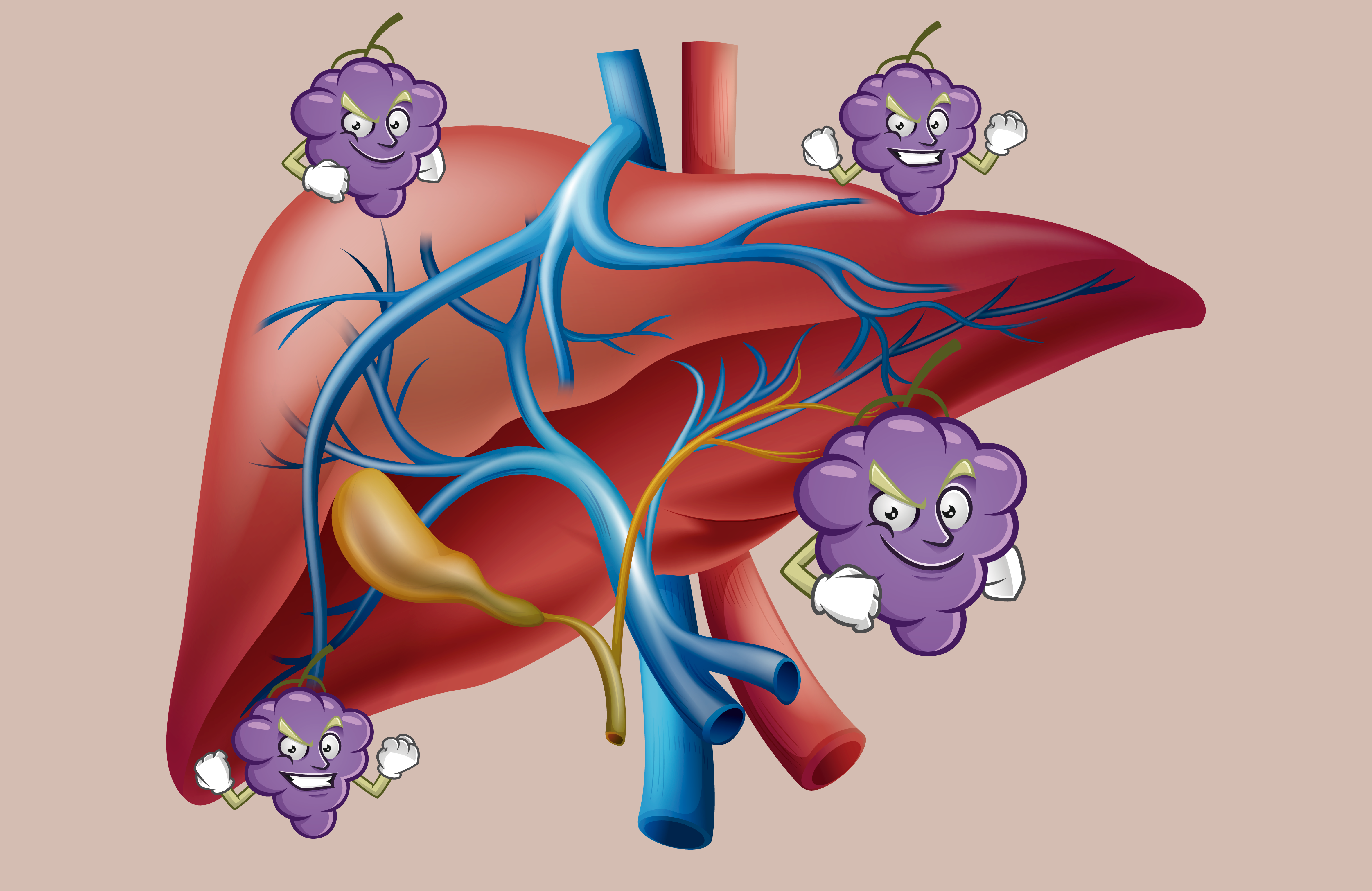By Filipa Correia and Paula Silva
Cisplatin
Most people heard about cisplatin (CSP) for the first time in the news, because it was the drug that helped Lance Armstrong (Tour de France winner) fight testicular cancer. Others heard about it because, unfortunately, someone close to them took or takes CSP. In fact, until the turn of the century, CPS was the most prescribed medicine, alone or combined with other compounds, in the world for cancer therapy (1).
Cisplatin-induced hepatotoxicity
Nonetheless, it can bring nefarious consequences to the surrounding tissues, inducing spermiotoxicity, ototoxicity, gastrointestinal toxicity, nephrotoxicity, haematological toxicity, neurotoxicity, and hepatotoxicity (2-4). Due to the mild and transient nature of the liver toxicity, when the drug is administered under standard doses, not much attention has been given to this subject and it has only been explored in a small number of papers (5). However, these toxic effects shouldn’t be underestimated, since the coadministration with other hepatotoxic agents could cause significant harm to the liver (6). Furthermore, although CSP-induced acute hepatic injury is reportedly dose-related, being high doses correlated to hepatotoxicity (7), a low dose repeated therapy may also carry the same side effects (1). The impairment of hepatic functions is known to arise from the disruption of mitochondrial function and the increased production of reactive oxygen species (ROS) induced by CSP (8). This compound weakens antioxidant activity, as suggested by the detection of high levels of lipid and protein oxidation, and compromises the efficiency of respiratory chain (1). If a partial hepatectomy is performed, this drug will also damage the regenerating liver by inducing the initiation of apoptosis (9).
Does resveratrol prevent cisplatin-induced hepatotoxicity?
Near the turn of the century, since 1991 when CBS featured a story on the French Paradox suggesting red wine consumption reduces the risk of heart disease, resveratrol (RSV) had been the most investigated molecule as the possible anti-aging miracle. RSV and other phenolic compounds, highly commended for their antioxidant characteristic, are found in a wide range of natural products, being particularly abundant in red wine, and confer to them a multitude of beneficial health properties (10). RSV is a stilbenoid that can be found in peanuts, pistachios, berries, dark chocolate and grapes, with the latter presenting a notably higher content than the others (10). The protection conferred to cells by this polyphenol has been associated to the activation of the sirtuin 1 pathway, which is known to be implicated in mitochondrial biogenesis and metabolic control (11). RSV operates, within the mitochondria, as an activator of the protein deacetylase and its substrate, peroxisome gamma coactivator-1α, which is a nuclear transcription factor. This is essential for the phenolic compound to exert its protective effect towards the preservation of normal mitochondrial activity (12). As a matter of fact, the pathway has already been targeted in toxicity studies with the intent to tackle pharmaceutical drugs awful consequences (13). Mice primary hepatocytes and HepG2 cells’ mitochondrial function was also found to be modulated by RSV in a SIRT1 dependent manner (12). Moreover, not only does this polyphenol display a chemoprotective activity, but also appears to have a therapeutic effect against cancer in various organs, including the liver (14). Combination therapy seems to be a promisor therapeutic strategy to liver cancer, it was found that a combinational synergism cytotoxicity of tanshinone IIA (Tan IIA) and RSV on human liver cancer HepG2 cells (15).
Considering CSP-induced toxicity, not much is known regarding RSV activity. RSV was shown to have a protective effect against myocardial damage and cardiac dysfunction induced by CSP in rats (16). However, when coadministrated with CSP it also displayed cytotoxic potential (16). It was found to potentiate the inhibitory effect of a non-toxic dose of CSP (14). A recent study showed a hepatoprotective effect of methanolic extract of leaves Capparis spinose. Using HPLC-analysis, RSV and other three compounds were found to be predominant in the extract. Rats were pre-treated with the extract 7 days before CSP being administered by gastric gavage. It was observed that the methanol extract of Capparis spinosa leaves has hepatoprotective effects, since allows the preventing from the destructive lipid peroxidation, the preserving of biochemical indicators and antioxidant enzyme activities at near-normal values, and the improving of liver lesions (17).
And now?
The development of chemoprotective and chemotherapeutic drugs from natural sources is of great importance. As already mentioned, there are very few articles discussing the influence of RSV on CSP induced hepatocytotoxicity. In future it will be interesting to study the antioxidant and mitochondrial protective activity of RSV, alone or co-administered with other polyphenols such (e.g. quercetin), to amplify the knowledge on the protective effects of polyphenols found in grapes and wine, key ingredients of the Mediterranean diet, against the damage caused by chemotherapeutic agents, in particular CSP, to the liver, one of the most affected organs in chemotherapy treatments.
 |
Filipa Correia finished the First Degree in Biochemistry in September of 2017 at University of Porto. |
References
1.Biochim Biophys Acta. 2001;1537(1):79-88.
2.J Appl Toxicol. 2008;28(3):337-44.
3.Cancer Treat Rev. 1998;24(4):265-81.
4.Eur J Pharmacol. 2002;442(3):265-72.
5.Ann Pharmacother. 1993;27(4):438-41.
6.Food Chem Toxicol. 2010;48(8):2052-8.
7.Reprod Toxicol. 2006;21(1):42-7.
8.Drug Saf. 1995;13(4):228-44.
9.Drug Chem Toxicol. 2015;38(4):452-9.
10.Biomed Pharmacoth. 2017;87:171-9.
11.Cancer Biother Radiopharm. 2009;24(6):675-80.
12.Anticancer Res. 2014;34(10):5473-80.
13.Anticancer Res. 2004;24(5a):2783-840.
14.Cell Physiol Biochem. 2015;35(3):1116-24.
15.Cell Metab. 2012;15(5):675-90.
16.Mol Cells. 2016;39(2):87-95.
17.Nat Prod Commun. 2009;4(5):635-58.

